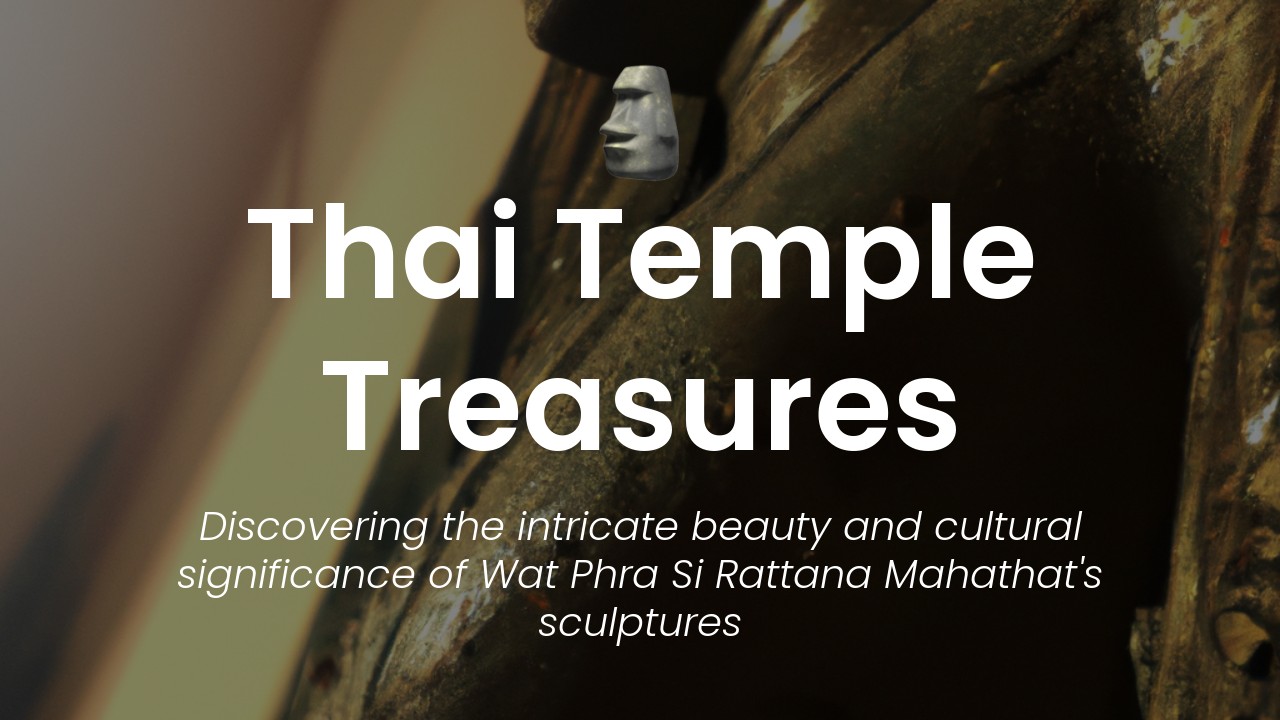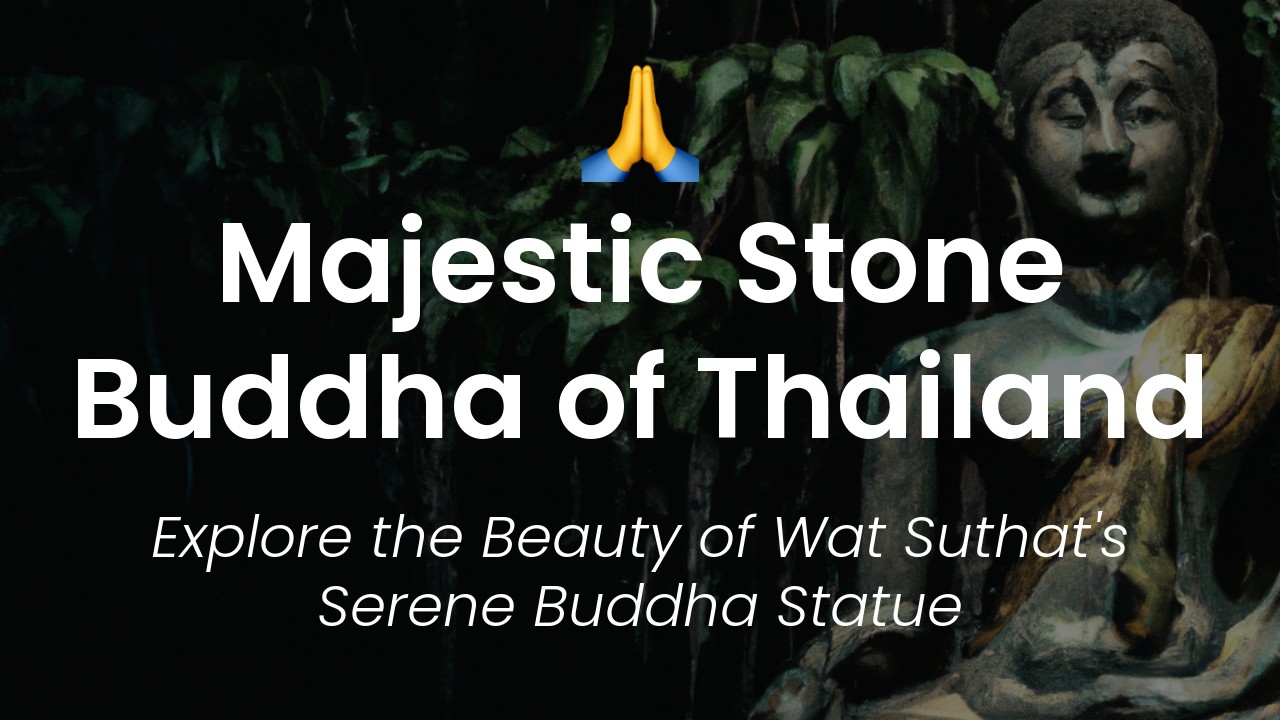I recently visited Ayutthaya, the ancient capital of Thailand, and was blown away by the majestic Buddha sculptures that are scattered throughout the city's temples and ruins. Ayutthaya is a UNESCO World Heritage Site, and for good reason – the city was the political and cultural hub of Thailand for over 400 years and is a testament to the country's rich history.
As a culture enthusiast and blogger, I couldn't help but feel inspired by the grandeur of Ayutthaya's Buddha sculptures. Each sculpture has its own unique story to tell, whether it's the serene expression of a meditating Buddha or the fierce posture of a warrior Buddha.
One of the most impressive sculptures is the famous reclining Buddha at Wat Lokayasutharam. At 37 meters long and 8 meters high, it is one of the largest reclining Buddhas in Thailand. The Buddha has a serene expression and lies on his right side with his head propped up by his hand. The sheer size of this sculpture is awe-inspiring, and it's hard not to feel a sense of tranquillity when standing in front of it.
Historical Background of Ayutthaya Sculpture
Ayutthaya was the capital of the Kingdom of Siam, which existed from 1350 to 1767. During its time as the political center of Thailand, Ayutthaya was known for its art and culture. Among the most striking works of art that have survived to this day are the many Buddha sculptures scattered throughout the city and its surrounding areas.
The art of Buddha sculpture in Ayutthaya flourished during the late 14th century when the art of bronze casting became more prevalent in Thai society. Many of the sculptures created during this time are bronze and are still in near-perfect condition today.
Types of Buddha Sculptures in Ayutthaya
There are several different types of Buddha sculptures found throughout Ayutthaya, each representing a different aspect of Buddhist philosophy. Some of the most common types are:
Meditating Buddha
The Meditating Buddha is perhaps the most iconic type of Buddha sculpture found in Ayutthaya. It depicts the Buddha sitting in the lotus position with its eyes closed and hands in the meditative mudra. This pose represents the Buddha's enlightenment and is often used as a symbol of inner peace and harmony.
Reclining Buddha
Another type of Buddha sculpture that is commonly found in Ayutthaya is the Reclining Buddha. This sculpture depicts the Buddha lying on its side with its head resting on its hand. The pose represents the Buddha's passing into Nirvana and is often used as a symbol of death and rebirth.
Walking Buddha
The Walking Buddha is another common type of sculpture found in Ayutthaya. This pose represents the Buddha's teachings and his journey through life. The sculpture depicts the Buddha walking with one hand extended out in front of it, as if reaching out to help others.
Standing Buddha
The Standing Buddha is a less common type of sculpture found in Ayutthaya, but it is still an important representation of Buddhist philosophy. This pose represents the Buddha's power and strength. The sculpture depicts the Buddha standing tall with its arms folded across its chest.
Differences in Style and Techniques
While the different types of Buddha sculptures in Ayutthaya share similar poses and symbolism, there are some differences in their styles and techniques.
The Meditating Buddha is often depicted with a serene expression on its face, while the Reclining Buddha usually has a more relaxed expression. The Walking Buddha and Standing Buddha often have more elaborate clothing and accessories, such as headdresses and jewelry.
In terms of technique, the older bronze sculptures tend to be more detailed, with intricate patterns and designs carved into the metal. The newer sculptures, which are often made from plaster or other materials, are generally simpler in design and style.
Where to Find the Best Buddha Sculptures
There are many different temples and historic sites in Ayutthaya where visitors can see Buddha sculptures. Some of the most popular include Wat Yai Chai Mongkol, Wat Phra Sri Sanphet, and Wat Mahathat.
Wat Yai Chai Mongkol is located just outside of the city center and is home to a large reclining Buddha sculpture. Visitors can climb to the top of the temple's pagoda for stunning views of the surrounding countryside.
Wat Phra Sri Sanphet is located in the heart of Ayutthaya's historic district and is home to several standing and walking Buddha sculptures. This temple also features a beautiful pagoda and several other historic buildings.
Finally, Wat Mahathat is one of the most famous temples in Ayutthaya and is home to a stunning collection of Buddha sculptures. This temple is particularly famous for its headless Buddha sculpture, which has become a popular photo spot for visitors.
Tips for Visiting Ayutthaya
If you're planning a trip to Ayutthaya to see the stunning Buddha sculptures, there are a few things you should keep in mind.
First, make sure to dress appropriately when visiting temples and other historic sites. This means wearing clothing that covers your shoulders and knees.
Second, be respectful when taking photos of the Buddha sculptures. Avoid turning your back to the statue or posing in inappropriate ways.
Finally, consider hiring a knowledgeable guide who can provide you with more information about the history and symbolism of the sculptures.
Conclusion and Final Thoughts
Ayutthaya's stunning collection of Buddha sculptures is a must-see for anyone interested in Thai culture and history. From the peaceful pose of the Meditating Buddha to the powerful stance of the Standing Buddha, these sculptures serve as a reminder of the beauty and complexity of Buddhist philosophy.
Whether you're a seasoned traveler or a first-time visitor to Thailand, a trip to Ayutthaya is sure to be an unforgettable experience. So pack your bags, grab your camera, and get ready to discover the wonders of this remarkable city!







